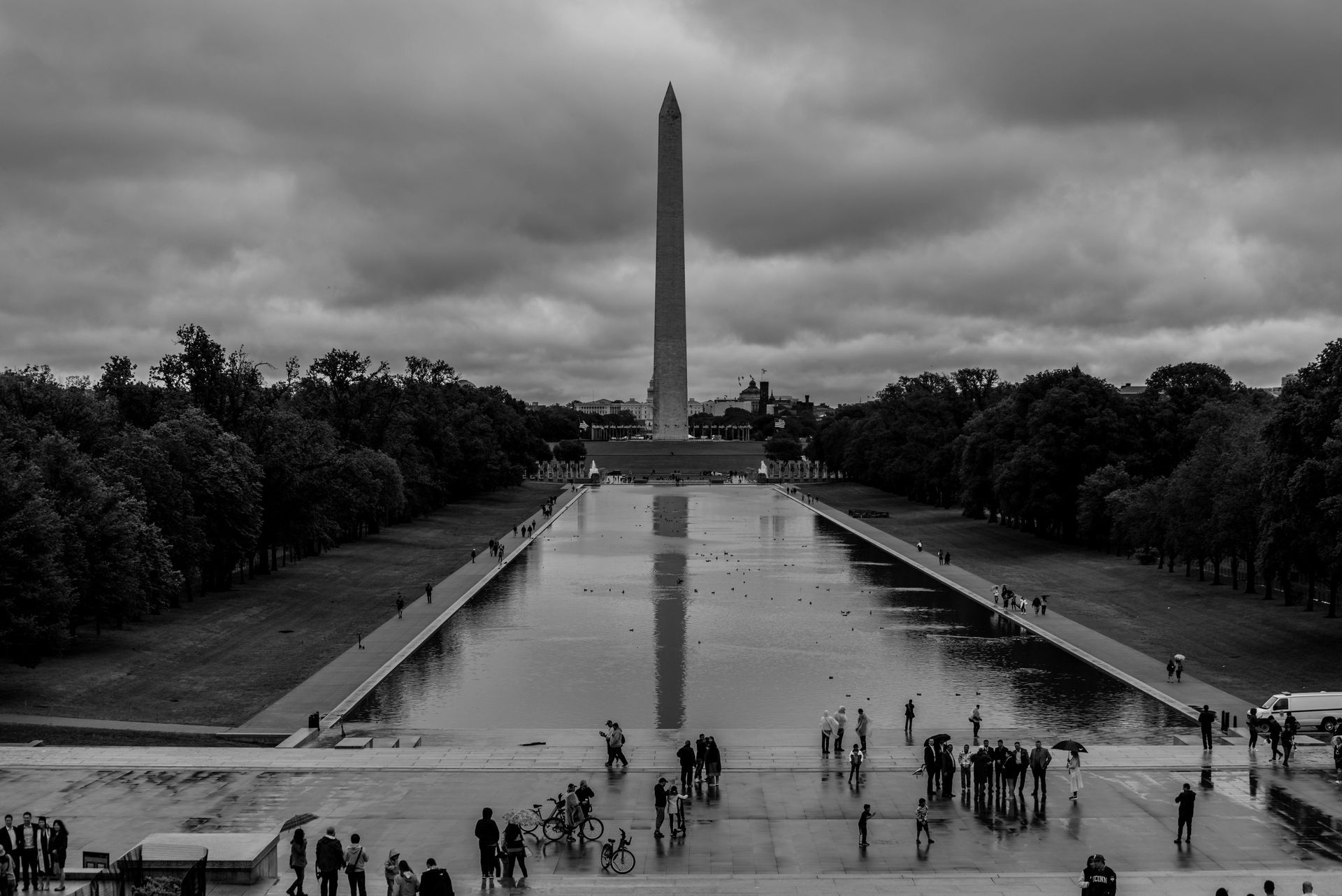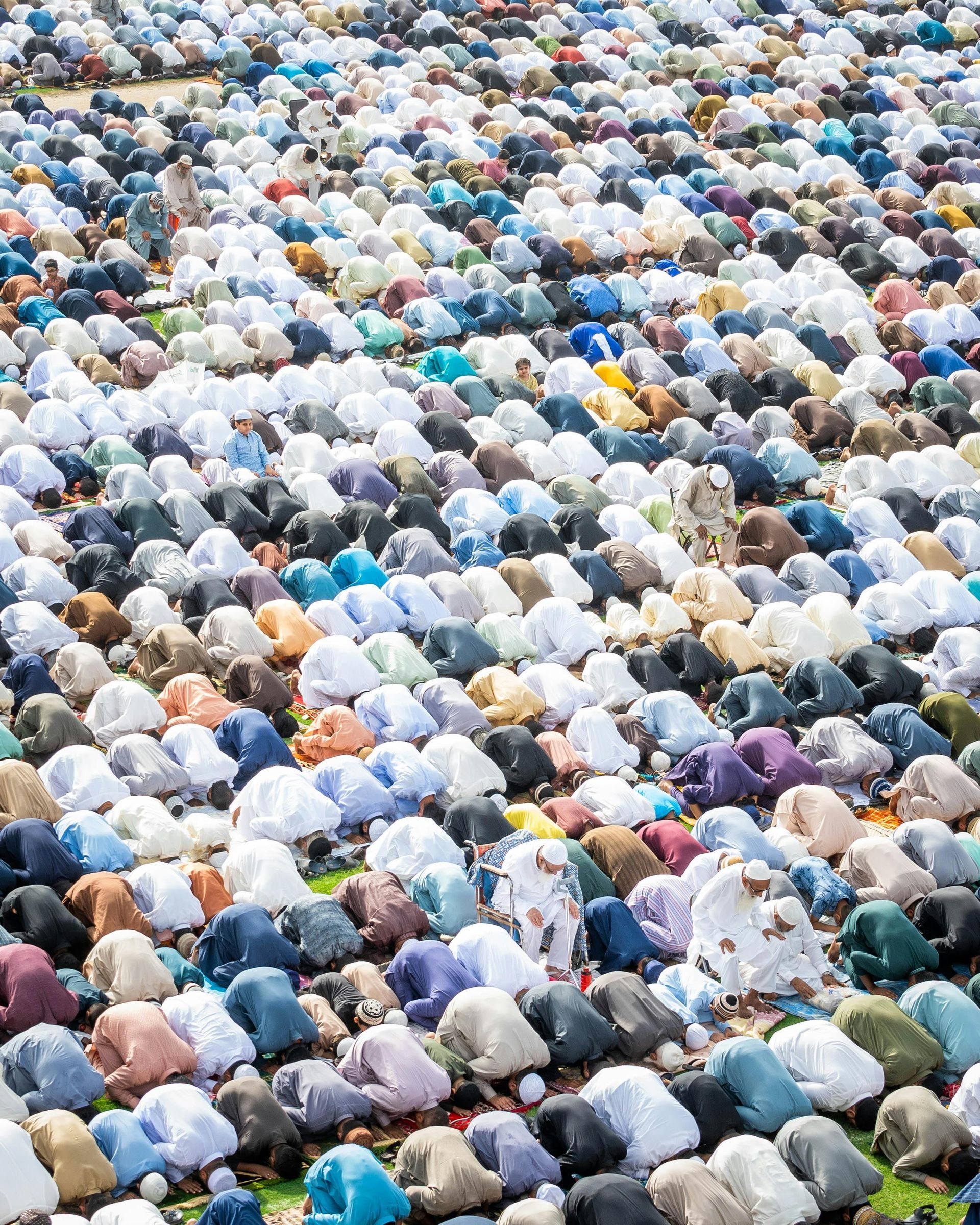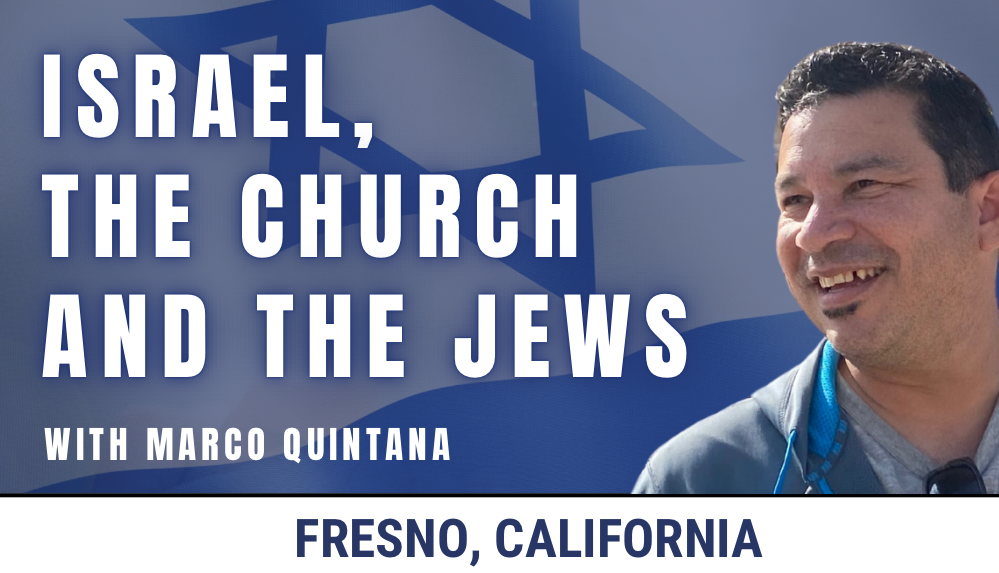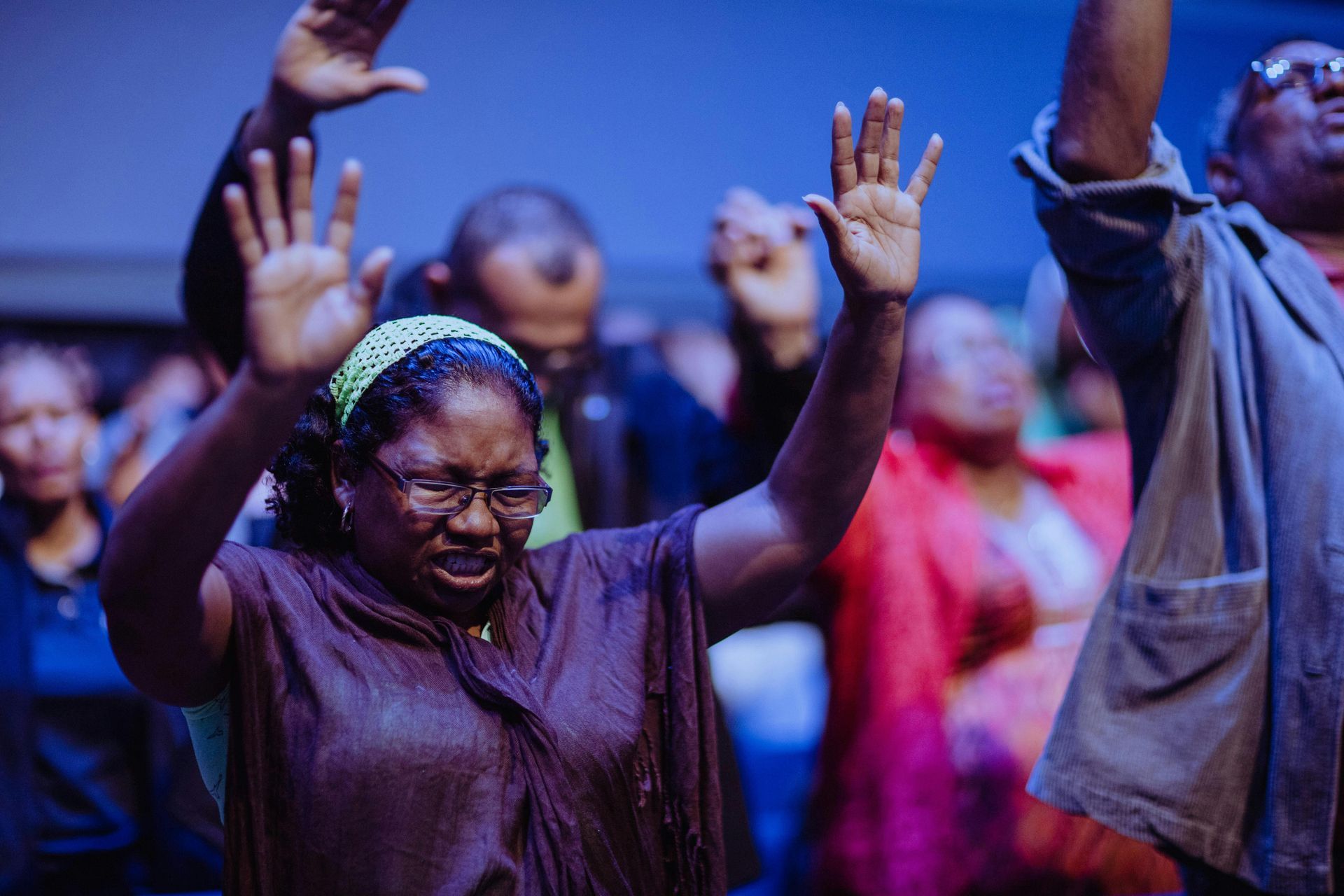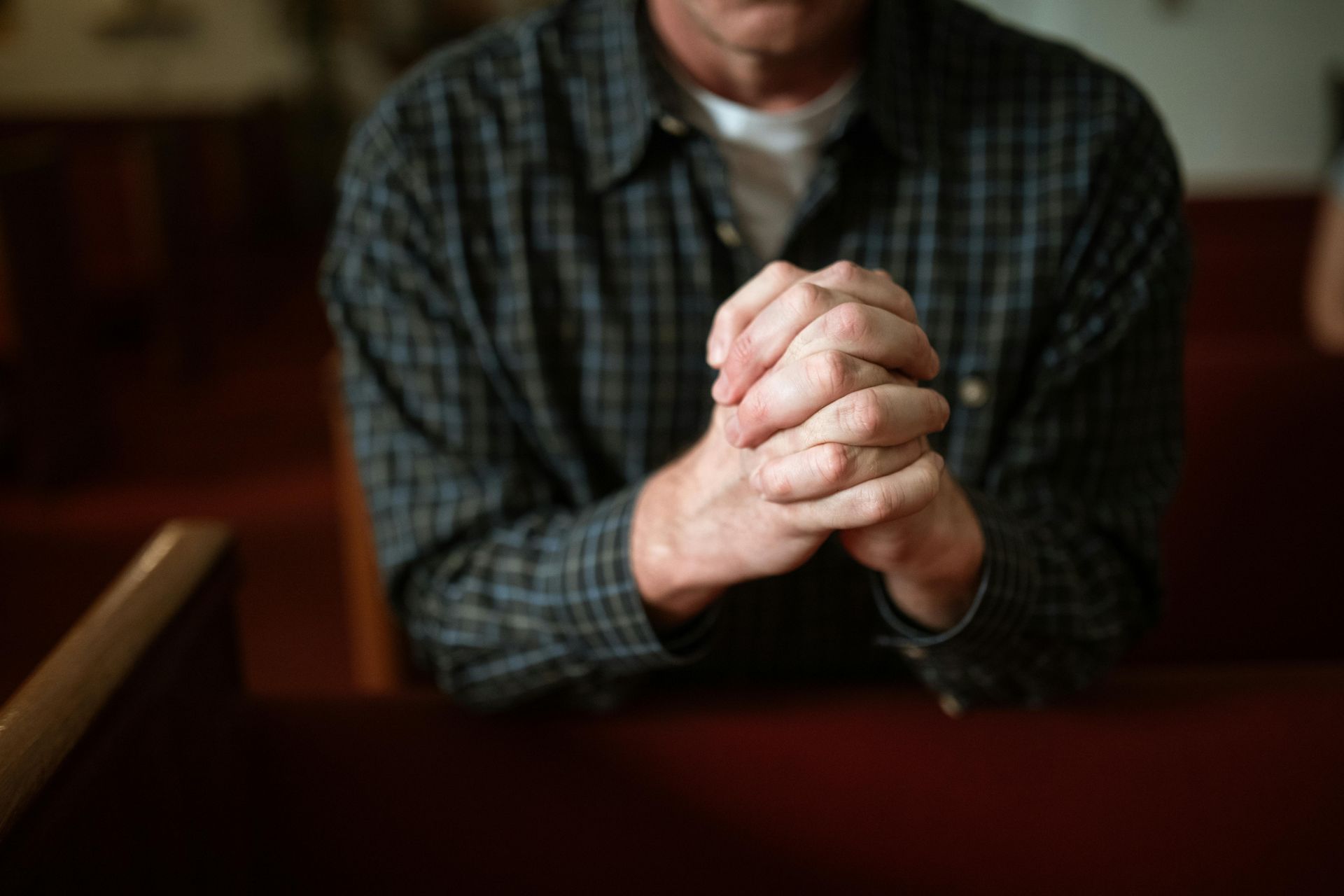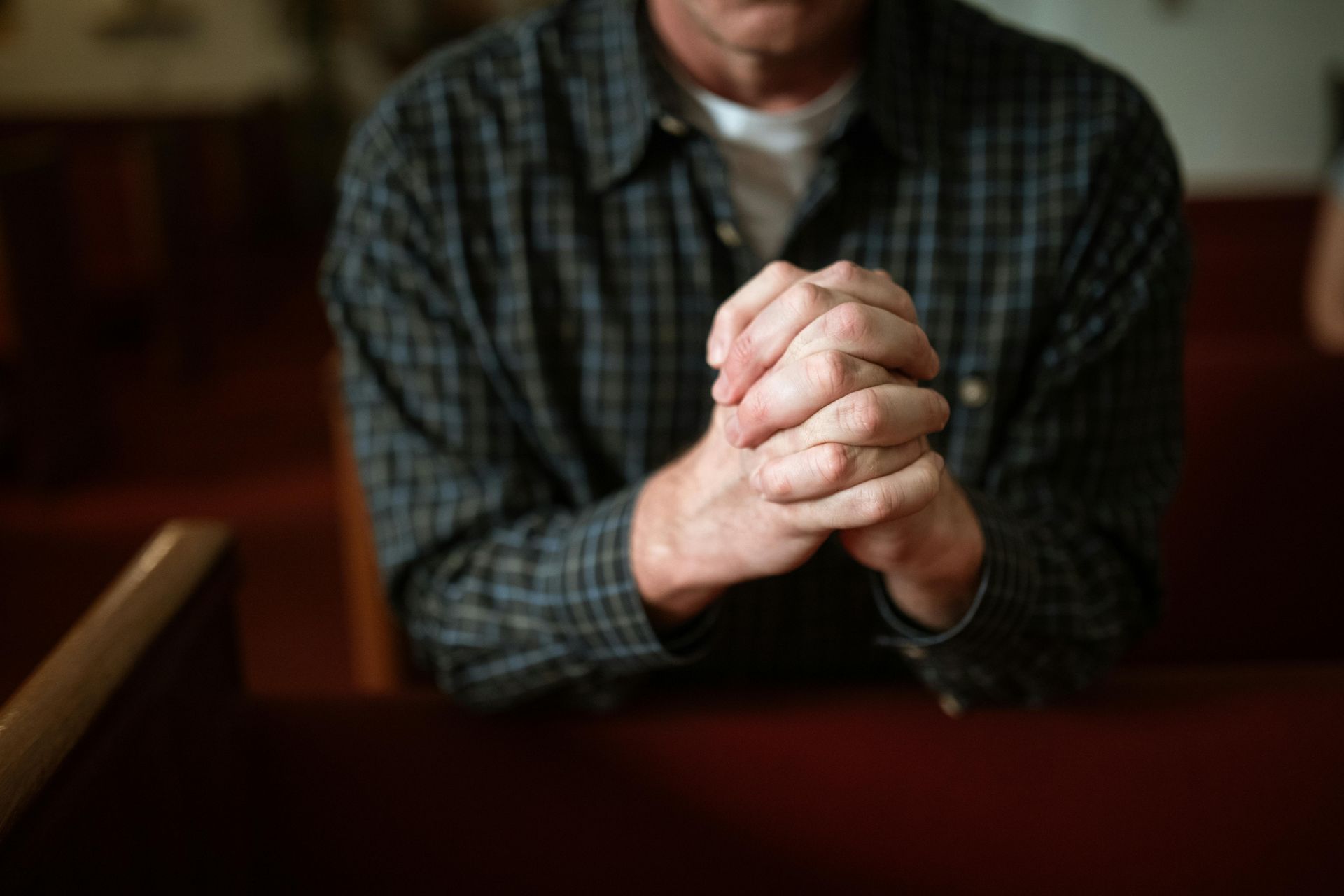Egypt, Babylon, or the Palm of God
Introduction
We have spoken a number of times concerning things that teach about the Last Days. There are a number of time periods in Israel's history, outlined in the Bible, that prefigure what will happen in the Last Days.
In watching news reports about the riots on the Temple Mount recently, I was reminded of one of the things that convinces me that we are in the Last Days. Specifically, there is much arguing over the propriety of custody of the Temple Mount.
I learned yesterday that a major American university in Massachusetts has banned their evangelical students' fellowship. It has been banned from the campus as a hate group because of their belief that homosexuality is wrong. Although this is under appeal, it sets a national precedent. If you believe what the Bible says about unnatural sex, the Bible becomes hate literature and you become a hate group, and the First Amendment does not protect inciting hatred. This also convinces me that it is the Last Days.
When I look at the apostasy in the church – the people on their way to ecumenical unity, Pensacola and other similar demonic deceptions – all of these things point to the Last Days.
I, of course, live in England, and I see what's happening: how people are having a single currency shoved down their throats even when they don't want it, how they're going into a federal, non-democratic Europe – entailing not just the loss of national sovereignty but also the loss of democracy – the decisions made by bureaucrats behind closed doors whom you did not vote for and cannot believe in. These things are being forced on people, yet they are sitting back and taking it. Of course, parliamentary democracy in its modern sense was born out of the influences of biblical Christianity, and now that Christianity has been abandoned in Europe, all the democracies that Christianity helped give rise to will likewise be abandoned.
Persecution of the church is already looming in America; if you don't agree with homosexuality, you are a bigot, and it becomes the equivalent of a hate crime to speak against such things.
Other Examples of "Last Days"
The last days of the 1st Century, before the Temple was destroyed in 70 AD, is one of the things that teaches about the end. The last days of Samaria in 720 BC is another thing that teaches about the End. However, we are now looking at about 585 BC, the last days of Judah before the Babylonian Captivity. Above all else in the Old Testament this teaches about the end. It is evident in the New Testament where it talks about eschatology – especially in the teaching of Jesus about the Last Days – that the themes from the books of Isaiah, Jeremiah, and Ezekiel about the Babylonian Captivity are being recycled. The destruction of the Temple talked about by Jesus in Matthew 24 and Luke 21 comes straight out of Jeremiah. Jesus warns repeatedly about false prophets and this theme is also prominent in the Major Prophets. "Fallen, fallen is Babylon" in the book of Revelation (Rev 14:8; 18:2) (comes straight out of Isaiah and Jeremiah. (Isa 21:9; Jer 51:8)
The same things that happened in the last days of Judah, when Jeremiah's message was rejected, will happen in the Last Days full-stop, both to the Jews and to the church; it will be repeated. Remember that a Judeo-Christian perspective of prophecy regards it as cyclical.
Let us begin to understand this: What will happen to faithful churches and the faithful remnant in the Last Days? What should we expect? There are various teachings that could explain some of this; for example, the Maccabees. However, we're looking at it now from the point of view of the Babylonian Captivity. In Jeremiah chapter 40, the Captivity is underway. Nebuchadnezzar invades Jerusalem four times. What you see happening right now, with the interfaith movement, the ecumenical movement, and the New Age movement, is about the Babylonian Captivity.
During the Middle Ages, Martin Luther came to realize there had been a Babylonian Captivity of the church under the medieval papacy. He understood the spiritual character of Babylon, this marriage of the political system of the world to a corrupt religious system: this was the “Holy Roman Empire”, which was neither holy nor Roman. This will happen again; we can see the Captivity coming. There are people everywhere who believe in having one “apostle” over a city, which is an ancient error begun by Ignatius of Antioch that is called “monoepiscopacy”. That is how the papacy began to evolve; it is an ancient deception that is making its comeback. The problem, of course, is that most of my fellow Pentecostals and Charismatics are too ignorant to realize that these are things that have happened in the past which will result in the same thing that happened in the past: a Babylonian Captivity of the church.
The Babylonian Captivity
Let us begin in chapter 40 of Jeremiah:
"Then the word of the LORD came to Jeremiah from the LORD, after Nebuzaradan, captain of the bodyguard, had released him from Ramah, when he had taken him bound in chains from among the exiles of Jerusalem and Judah who were exiled to Babylon. Now the captain of the guard had taken Jeremiah and said to him, 'The LORD your God promised this calamity against this place, and the LORD has brought it on it and done just as He promised, because you people sinned against the LORD and did not listen to His voice. Therefore this thing has happened to you. But now, behold, I am freeing you today from the chains which are on your hands. If you would prefer to come with me to Babylon, come along, and I will look after you. But if you would prefer not to come to Babylon, never mind - look, the whole land is before you. Go wherever it seems good and right for you to go.' As Jeremiah was still not going back, he said, 'Go on back, then, to Gedaliah the son of Ahikam the son of Shaphan, whom the king of Babylon has appointed over the cities of Judah, and stay with him among the people. Or else go anywhere it seems right for you to go.' And the captain of the guard gave him a ration and let him go.
"Then Jeremiah went to Mizpah, to Gedaliah the son of Ahikam, and stayed with him among the people who were left in the land. Now all the commanders of the forces that were in the field, they and their men, heard that the king of Babylon had appointed Gedaliah the son of Ahikam over the land, and that he had put him in charge of the men, women and children, those of the poorest of the land who had not been exiled to Babylon.
"'Now as for me, behold, I am going to stay at Mizpah to stand for you before the Chaldeans who come to us. But as for you, gather in wine and summer fruit and oil, and put them in your storage vessels, and live in your cities that you have taken over. Likewise also, all the Jews who are in Moab and among the sons of Amon and in Edom, who were in the other countries, heard that the king of Babylon had left a remnant for Judah, and that he had appointed over them Gedaliah the son of Ahikam the son of Shaphan. And all the Jews returned from all the places to which they had been driven away, and came to the land of Judah, to Gedaliah at Mizpah, and gathered their wine and summer fruit in great abundance.
"Now, Johanan the son of Kareah and all the commanders of the forces that were in the field came to Gedaliah at Mizpah, and said to him, 'Are you well aware that Baalis the king of the sons of Amon has sent Ishmael the son of Nethaniah to take your life?' But Gedaliah the son of Ahikam did not believe them.
"Then Johanan the son of Kareah spoke secretly to Gedaliah at Mizpah, saying, 'Let me go and kill Ishmael the son of Nethaniah, and not a man will know. Why should he take your life so that all of the Jews who are gathered to you would be scattered, and the remnant of Judah perish?' But Gedaliah the son of Ahikam said to Johanan the son of Kareah, 'Do not do this thing, for you are telling a lie about Ishmael.
"Now it came about in the seventh month that Ishmael the son of Nethaniah the son of Elishama of the royal family and one of the chief officials of the king, along with ten men, came to Mizpah to Gedaliah the son of Ahikam. While they were eating bread together they were in Mizpah. Ishmael the son of Nethaniah and the ten men who were with him arose and struck down Gedaliah the son of Ahikam the son of Shaphan with the sword, and put to death the one the king of Babylon had appointed over the land.
"Ishmael also struck down all of the Jews that were with him, that is, with Gedaliah at Mizpah, and the Chaldeans who were found there, the men of war. Now it happened on the next day of the killing of Gedaliah, when no one knew about it, that eighty men came from Shechem of Shiloh where the ark had formerly been, and from Samaria with their beards shaved, their clothes torn, and their bodies gashed, having grain offerings and incense in their hands to bring to the house of the LORD. Then Ishmael the son of Nethaniah went out from Mizpah to meet them, weeping as he went. And it came about as he came that he said to them, 'Come to Gedaliah the son of Ahikam!'
"Yet it happened that as soon as they entered the city, Ishmael the son of Nethaniah and the men that were with him slaughtered them and cast them into the cistern."
The faithful remnant of the last days of Judah faced what the faithful remnant of the Last Days of the church will face. They had three choices: Egypt, a figure of the world; Babylon, a figure of false religion; or the palm of God.
Trying to Get Along
Yet for the sake of trying to keep peace, Gedaliah tries to tell people to honor the king of Babylon. "Look, we have to go along with the system; we don't want to be deported too. We don't want to find ourselves re-scattered. We don't want to be taken away; we want to keep what we have, so we have to agree to pay homage; go along with the system." This is very much what happened in the 1st Century. The reason the early Christians got themselves into trouble was not what they believed, but their refusal to pay homage to the Emperor, who at that time had become the equivalent of the king of Babylon. The mystery religions of pagan Babylon were now in Rome, in the pantheon, and the Emperor as the pontiff was the head of it. What the king of Babylon was in Jeremiah's day, the Emperor was in the 1st Century. It was not what they believed, but what they did not believe that got them into trouble. "You can believe what you want, as long as you go along with the program." We will find this mindset increasing in the Last Days, even among the faithful remnant. We will have visible leaders who will try to compromise with Babylon, and they will give you what seem to be pastoral reasons: "I'm trying to protect you." "I'm trying to secure what we have, to preserve what remains." Even among the faithful remnant, expect a concerted effort to bring you into line with the status quo. They will come with very persuasive and very logical arguments along that line.
God will judge such people and their motives; they won't survive either. Gedaliah was even warned to stop what he was doing, that he was going to get himself killed; but he refused to listen. Do not think for one moment that you can make some kind of peace with the king of Babylon. Do not think that there can be any accommodation or cessation of hostilities. We cannot “get along” with the king of Babylon.
They were invited to come to Babylon; that was their first choice. Is your church going to join the ecumenical movement? Is your denomination going to join the World Council of Churches? The False Prophet will eventually gain control over this and use it to support the Antichrist. That's the first choice; expect it to happen in the Last Days. You will find people who will try to rationalize and gloss over the issues – “Well, maybe I don't agree with them, and I understand that we're the faithful remnant, but we have to try to get along with them.” We will find this being said; but ultimately, there is nothing in that but death. Notice that not only did Gedaliah die, but those of the poor and simple who followed him died with him. Down that road lies death; there is no peace with Babylon.
More than that, Babylon cannot be changed. Let's look at Jeremiah 51:49 Babylon is under judgment in verse 49; Babylon is to fall for the slain of Israel. In verse 60 Jeremiah writes on a scroll of the calamities that will come on Babylon. In verse 24, it says that God will repay Babylon for what Babylon has done. But in verse 6 Jeremiah is saying, “Flee from the midst of Babylon; each of you save his life.” In other words, 'Get out of there!' Get out of ecumenical denominations; God's purpose is to destroy them.
In verse 9, we find that there was attempted healing applied to Babylon, but she was not healed.
We applied healing to Babylon, but she was not healed; Forsake her and let us each go to his own country, For her judgment has reached to heaven And towers up to the very skies.
Babylon cannot be healed. It has not changed from the time of the Tower of Babel to the Babylonian Empire to what you see in the book of Revelation; it cannot change. One of today's myths is this: The Roman Catholic Church has changed since the second Vatican Council. Well, the second Vatican Council documents all affirm the Council of Trent. You have two kinds of doctrine in the Roman Catholic church: proxima fadi and di fadi. A proxima fadi doctrine can be changed; the pagan mass can be changed from Latin to English. A di fadidoctrine cannot be changed; the mass itself cannot be changed, nor can purgatory or any doctrine like it. The Roman Catholic church admits this.
Jer 5:19 says that all of mankind is stupid, devoid of knowledge. People are stupid; Jeremiah uses very strong terms. Throughout his book, he says things that would sound crude if we were to say them. He uses two different words for human stupidity, and neither one of them is pleasant. Look at Jeremiah chapter 10:8:
"But they are altogether stupid and foolish in their discipline of delusion."
One of the words he uses for “stupid” means a perversion of logic to justify what is known to be wrong. People know that certain things are wrong, but they pervert their logic in order to ease their conscience. When Jeremiah says they are stupid, he doesn't mean they are congenitally stupid, that they are slow learners or have a birth defect, he means that they willfully pervert their logic. This is exactly what we see happening today; people who should know better, even theologians like J. I. Packer, are perverting their logic. And what is the purpose of it? To make a deal with Babylon. But those who follow Gedaliah will wind up like Gedaliah.
The first offer to be made, then, is an invitation to go to Babylon. But let us continue
Going to the World
Jeremiah 41:16
“Then Johanan the son of Kareah and all the commanders of the forces that were with him took from Mizpah all the remnant of the people who had recovered from Ishmael the son of Nethaniah after he had struck down Gedaliah the son of Ahikam; that is, the men who were soldiers, the women, the children, and the eunuchs whom he had brought back to Gibeon.”
Johanan did not hate Gedaliah; he simply tried to warn him to stop being so naïve, or he would go to destruction and bring the people with him. Expect the Johanans who say that to be ignored, just as they ignore the Jeremiahs until it is too late. Just as they found out that Jeremiah was right, so they also found out that Johanan was right. Ultimately, however, what is left is what's pure. There is a sifting process in motion here; the deception comes, but even the deception that comes from Babylon is part of the sifting process. The Lord only wants those who are really, really right.
Let us look at what happens: Johanan gathers them, and in verse 17 he brings them back from Gibeon.
“And they went and stayed in Geruth Kimham, which is next to Bethlehem, in order to proceed into Egypt because of the Chaldeans, for they were afraid of them since Ishmael the son of Nethaniah had struck down Gedaliah the son of Ahikam, whom the king of Babylon had appointed over the land.”
They go to Geruth Kimham, which is next to Bethlehem. We must understand why they did that. By this time the throne of David had been lost. There was no longer a living descendant of David on the throne. Their longing was for the house of David to be restored, which they began to see in Messianic terms. The whole concept of the Messiah, while it was always there, really begins to develop and evolve after the Captivity. They knew about the Messiah, but it really began to crystallize and clarify after the Captivity, that He would restore this lineage of David. God had promised the Jews that there would always be a descendant of David on the throne of David. Now either Jesus is spiritually on the throne of David, and will one day rule from Jerusalem on the throne of David, or God has broken His promise, which Scripture tells us He cannot do.
Geruth Kimham means “the lodge of pining”. It was situated next to Bethlehem, which was the city of David, where the house of David had originated. So they are pining the loss of the lineage of David, and longing for it to be restored. That is why they go to Geruth Kimham. What you will find in the Last Days among the remnant is this: they will go to Geruth Kimham. They will reach such a state of despair that their only aspiration is the return of Jesus. They realize that nothing will ever make it the way it used to be; nothing will restore Christianity to what it had historically been. Nothing except the return of Christ. The church becomes a lodge of pining, where the only hope we have to hold onto is the promise of Jesus' coming. We will see this desperation.
However, in the midst of that desperation, the pressures of practical reality begin to set in. So, not wanting to go to Babylon – that didn't work, and the ones who tried it are dead – the next temptation is to go to Egypt, which, as we know from Jeremiah 30:31 and many other places in Scripture, is really going to the world for help. In the beginning, Egypt is Egypt and Babylon is Babylon. Nobody at this point expected that Babylon would also conquer Egypt. Ultimately, the Antichrist gets practically all of it. There were some Jews who found refuge in Edom, and it's interesting to see in Daniel that that area seems to escape some of what the Antichrist will be able to do. The area of Petra, it would appear from Daniel, provides some refuge. For some reason, it will not be under Antichrist's domain to the same degree. This is very mysterious and I don't fully understand it. However, there were Jews going there; that is where some of the faithful remnant went when Jerusalem was under siege. It would appear from Isaiah chapter 16 and others that there is some future eschatological significance to this area around Petra in Edom.
Let's look more closely at Geruth Kimham: Under this pressure, there comes a pressure to go to the world for help. The same thing happens with Hezekiah in Isaiah 30 and 31; it becomes an issue again. They fear the Babylonians, so they go to the world. The world, its governments, its legal systems, etc. – it will not protect us in the Last Days. The only reason that any government has at any time protected the rights of Christians is because of Christian influence in that government. Paul instructed the churches to pray for those in authority, even the pagan Emperor, that they might lead peaceable lives. Paul himself appealed to Caesar – we can do that, but ultimately Caesar too, who is another figure of Antichrist, turned against the Early Church. The world offers nothing, but things become so desperate that many people will want to go to the world.
Seeking Counsel
Let's continue in chapter 42 verse 1:
"Then all the commanders of the forces, Johanan son of Kareah, Jezaniah son of Hoshaiah, and all the people, both small and great, approached and said to Jeremiah the prophet, 'Please let our petition come before you, and pray for us to the LORD your God - that is for all this remnant, because we are left but a few out of many, as your own eyes now see us - that the LORD your God would tell us the way in which we should walk and the thing that we should do.' Then Jeremiah the prophet said to them, 'I have heard you. Behold, I am going to pray to the LORD your God in accordance with your words. And it will come about that the whole message which the LORD will answer you, I will tell you. I will not keep back a word from you.' Then they said to Jeremiah, 'May the LORD be a true and faithful Witness against us if we do not act in accordance with the whole message which the LORD your God will send you to us. Whether it is pleasant or unpleasant, we will listen to the voice of the LORD our God, to Whom we are sending you, that it may go well with us when we listen to the voice of the LORD our God.'"
The faithful remnant knows that Jeremiah is a true prophet and that all the other guys to whom the kings were listening were liars and deceivers who are now either dead or in Babylon. The faithful church will ask, "What should we do, Lord? We're in this situation in Geruth Kimham, we're longing for Jesus to come back, for His kingdom – it's the only hope we have. But on one hand, we can't go to Babylon – look what happened to those who tried it – and on the other hand, the only alternative seems to be Egypt. What should we do? We'll listen to You; we'll do whatever the Lord says." Well, unfortunately, during times of pressure there are Christians who will say, "We will do whatever the Lord says, as long as it's in agreement with what we want."
Jeremiah 42:7…
"Now it came about at the end of ten days that the word of the LORD came to Jeremiah."
Notice that; Jeremiah went and sought the Lord, and the Lord answered ten days later. Be careful of people who think they can go around prophesying and giving words and hearing from the Lord this, this, this and that; that is clairvoyance and soothsaying, not prophecy. True prophets don't go around claiming that kind of revelation all the time. What they do is point people to the Scripture, and if they do get a revelation, it's always based on Scripture. Jeremiah seeks God. Now, ten days is a significant figure in the Bible. Forty and ten are the two numbers most associated in Scripture with testing. If you recall, in Revelation 2:10 Jesus says that the church of Smyrna will be persecuted and put in prison for ten days, and this seems to correspond to the ten major periods of persecution under the emperors.
Jeremiah 42:8…
"Then he called for Johanan the son of Kareah and all the commanders of the forces that were with him, and for all the people, both small and great, and said, 'Thus says the LORD God of Israel, to whom you sent me to present your petition before Him: "If you will indeed stay in this land, then I will build you up and not tear you down; I will plant you and not uproot you, for I will relent concerning the calamity I have inflicted on you. Do not be afraid of the king of Babylon, whom you are now fearing. Do not be afraid of him,' declares the LORD, 'for I am with you to save you and deliver you from his hand. I will also show you compassion, so that he will have compassion on you and restore you to your own soil. But if you are going to say, "We will not stay in this land," so as not to listen to the voice of the LORD your God, saying, "No, but we will go to the land of Egypt, where we shall not see war or hear the sound of a trumpet or hunger for bread, and we will stay there," in that case, listen to the word of the LORD, O remnant of Judah: Thus says the LORD God of hosts, the God of Israel: if you really set your mind to go into Egypt and reside there, it will come about that the sword which you are afraid of will overtake you there in the land of Egypt, and the famine about which you are anxious will follow closely after you there in Egypt, and you will die there. So all the men who set their minds to go to Egypt and reside there will die of the sword, of famine, and of pestilence, and they will have no survivors or refugees from the calamity that I am going to bring on them.
“For thus says the LORD of hosts, the God of Israel, as My anger and wrath have been poured out on the inhabitants of Jerusalem, so My anger and wrath will be poured out on you when you enter Egypt, and you will become a curse, an object of horror, an imprecation and a reproach, and you will see this place no more.' The LORD has spoken to you, O remnant of Judah: Do not go into Egypt. You should clearly understand that this day I have testified against you, for you have only deceived yourselves. For it is you who sent me to the LORD your God, saying, 'Pray for us to the LORD our God, and whatever the LORD our God says, tell us so we will do it.' So I have told you today, but you have not obeyed the LORD your God, even in whatever He has sent me to tell you. Therefore you should now clearly understand that you will die by the sword, by famine and by pestilence in the place where you wish to go to reside."'
Where Should We Go?
Well, they went to Egypt, they went to the world. Let's understand this: they did not go to the world because they were seeking the carnal pleasures of Egypt. They went to the world in a time of great duress – fear of the king of Babylon. When the Antichrist comes, he is going to invoke a tremendous fear. Those dwelling at Geruth Kimham will have that choice: Do we go into Babylon? Do we go into Egypt? Do we go into the interfaith movement, or do we simply go to the world? Or do we place ourselves in the hand of God, remain where we are, and trust Him?
That was the choice they had, and that will be the choice faced by the faithful remnant in the Last Days: Egypt, Babylon, or the palm of God. Those who went to Babylon found death. Those who went to Egypt were pursued by the sword and by famine in the world. There is no safety in Egypt. But God says, "Don't be afraid of the king of Babylon. If you will stay in this land I will build you up and not tear you down. I will plant you and not uproot you." God's promise is always good, though it is very difficult to see and believe that when all around you is calamity: the sword, the famine, the king of Babylon whose power seems invincible. Yet that will be the choice and there were, and will again be, people even in the good churches who make the wrong choice. However, once more, they will have been warned.
Let's go a bit further: in chapter 43:1-3 it says this:
“But it came about that as soon as Jeremiah, whom the LORD their God had sent, had finished telling all the people the words of the LORD their God..
– that is, all the words –
…that Azariah the son of Hoshaiah and Johanan the son of Kareah and all the arrogant men said to Jeremiah, "You are telling a lie. The LORD our God has not sent you to say, 'You are not to enter Egypt to reside there'. But Baruch the son of Neriah is inciting you against us to give us over into the hand of the Chaldeans so they may put us to death or exile in Babylon."'
First the backslidden nation and its leaders and false prophets rejected Jeremiah. But the heat gets so intense in the last days of Judah that even in the faithful remnant there is a rejection of Jeremiah, orchestrated by the arrogant among them. It would almost seem to be a contradiction in terms; how could there be people in the faithful remnant who are arrogant?
You know what? If you want to see a big mess today, look at discernment ministries. The very ones who realize the nature of deception, the ones who realize what Pensacola andToronto are, and what the ecumenical movement is, the very ones who know that these things are wrong – the very ones who understand the demonic nature of faith-prosperitypreaching, the ones who understand what's wrong – within the ranks of those organizations you will find good and bad; and yes, you will find people who are downright arrogant.
Jewel van der Merwe is under tremendous attack at the moment; Bill Randles and myself were attacked in England by someone else in a discernment ministry, simply because we are not Cessationists. Yes, arrogant men. There are some people who were very strongly influenced by Neo-Nazis in Australia; they are vehemently anti-Semitic and are constantly worsening. They are attacking Arnold Fruchtenbaum and myself, to name a few.
Even among the remnant, look out. The fact that someone realizes the nature of deception does not necessarily mean they are one of us. They may be in our circle, but there are people in our circle who have their own agenda. Remember: Satan wants to infiltrate the remnant. The mainstream Judah was gone; he already had them. It was only the remnant who presented a problem for the king of Babylon. The same is true today; Satan isn't worried about what is going on inside First Assemblies of God – he has those people deceived already. Now he wants to get people into your church. And he'll do it.
Just because someone realizes what's wrong, they are not automatically right. There are good people in the discernment movement and there are also bad ones. In fact, I would say that there are as many bad ones as there are good ones. This is the world; they will attack anyone who truly tries to protect the sheep. They will attack the Jeremiahs, and they will attack the Baruchs. I've seen Dave Hunt attacked by people in discernment ministries; in fact, Dave Hunt is under attack right now by them. I have seen Bill Randles attacked, Philip Powell attacked, Jewel van der Merwe attacked, yours truly attacked, and by whom? By people outside of discernment circles? No – by people who are supposedly in discernment ministry. These people are quite arrogant.
Realize something: a good, faithful church will attract refugees from all the bad churches around it. Some of those people who come to your church will be utterly sincere; however, there are other people who, again, have an agenda. They are against any kind of authority unless it's their own, against any kind of commitment unless it's on their terms, and they will latch onto a good church simply because it becomes a platform for them from which they wish to exercise their own interests. Once these good churches no longer accommodate what they want, they will turn against those churches. This happens everywhere; simply because someone is against what you are against does not guarantee that they are for what you are for. Real deception will increase in the Last Days. Just as they attacked Jeremiah and Baruch in the last days of Judah, so they are attacking Dave Hunt and Jewel van der Merwe today. It happened then, and it's happening now.
Babylon Overthrows Egypt
But let's look further, at Jeremiah 43:5-7:
“But Johanan the son of Kareah and all the commanders of the forces took the entire remnant of Judah which had returned from the nations to which they had been driven away in order to reside in the land of Judah. The men, the women, the children, the king's daughters - every person whom Nebuzaradan the captain of the guard had left with Gedaliah the son of Ahikam the grandson of Shaphan, together with Jeremiah the prophet and Baruch the son of Neriah, and entered the land of Egypt. For they did not obey the voice of the LORD, and went as far as Tahpanhes.”
Johanan seemed to be a good guy earlier. The deception in the Last Days becomes like intrigue. Early on, one of George Washington's best generals in fighting the American Revolutionary War against the British was Benedict Arnold, who later became one of the British Army's best generals against George Washington.
Jeremiah 43:8-10:
“In Tahpanhes of Egypt, the word of the LORD came to Jeremiah: "Take large stones in your hands and hide them in the mortar of the brick terrace which is at the entrance of Pharaoh's palace at Tahpanhes in the sight of some of the Jews, and say to them, 'Thus says the LORD God of Israel: "Behold, I am going to send Nebuchadnezzar, the king of Babylon, My servant, and I am going to set his throne right over these stones that I have hidden, and he will spread his canopy over them."'
Even Egypt came under the dominion of the king of Babylon. Look at Revelation18:3, which says:
“For the nations have drunk of the wine of the passion of her immorality, and the kings of the earth have committed acts of immorality with her.”
The kings of the earth; the merchants of the earth have become rich by the wealth of her sensuality. In the Last Days, the prosperity of the nations will depend on their relationship to Babylon. Revelation 13:11:
“The beast came up out of the earth and spoke, and he had two horns like a ram and like a dragon.”
The earth is Israel; the other beast comes up out of the sea, which is the nations. Jeremiah 44:30:
“Thus says the LORD: ‘Behold, I am going to give over Pharaoh Hophrah, king of Egypt, into the hand of his enemies, into the hand of those who seek his life, just as I gave over Zedekiah king of Judah into the hand of Nebuchadnezzar king of Babylon, who was his enemy and seeking his life.’”
If God gave the Hebrew king over to the king of Babylon, how much more quickly will He give the pagan king over? If the king of Babylon can get control of so much of the church, what is there to stop him from gaining control of the world? Nothing. It is a false security; a deadly false security.
Going to Egypt
But let us continue: Jeremiah 44:12-14:
“I will take away the remnant of Judah that have set their minds on entering the land of Egypt to reside there, and they will all meet their end in the land of Egypt. They will fall by the sword and meet their end by famine; both small and great will die by the sword and famine, and become a curse, an object of horror, an imprecation and a reproach. And I will punish those who live in the land of Egypt just as I did those in Jerusalem, with the sword and with famine. So there will be no refugees or survivors for the remnant of Judah who have entered the land of Egypt to reside there, and then to return to the land of Judah to which they are longing to return to live. For none will return except a few refugees.”
In the Bible going to Egypt is always a picture of backsliding. When somebody backslides and goes into the world, the Holy Spirit convicts them and tries to bring them back. In the Last Days, however, it's different; very few of those who go into the world in the Last Days will make it back out. Going back to Egypt is dangerous at any time, but in the Last Days your chances of getting back to the Lord once you leave Him are very slim. How many people, for instance, are cured of AIDS? The odds are similar; very few will make it.
They had a choice: Babylon was death and Egypt was death; the only right choice was to stay in the palm of God.
The Queen of Heaven
In Jeremiah 44:19, this is going to be a big issue in the Last Days. I will tell you what the penultimate deception is going to be, the ultimate being the Antichrist. Do you notice in the book of Revelation that when the Antichrist is spoken of, there is always the figure of a woman in the background? She is the penultimate; he is the ultimate. And here is what it will be…
“And,” said the women, “when we were burning sacrifices to the queen of heaven and were pouring out drink offerings to her, was it without our husbands that we made for her sacrificial cakes in her image and poured out drink offerings to her?”
Verse 24…
“Then Jeremiah said to all the people, including all the women, "Hear the word of the LORD, all Judah who are in the land of Egypt: thus says the Lord of hosts, the God of Israel - 'As for you and your wives, you have spoken with your mouths and fulfilled it with your hands, saying, "We will certainly perform our vows that we have vowed to burn sacrifices to the Queen of Heaven, and pour out libations to her." Go ahead and confirm your vows, and certainly perform your vows. Nevertheless hear the word of the LORD: All Judah who are living in the land of Egypt, behold, I have sworn by My great Name,' says the LORD, 'Never again shall My name be invoked by the mouth of any man of Judah in the land of Egypt, saying, "As the LORD lives". Behold, I am watching over them for harm, not for good, and all the men of Judah who are in the land of Egypt will meet their end by the sword and by famine until they are completely gone. And those who escape the sword will return out of the land of Egypt unto the land of Judah, once more few in number. Then all the remnant of Judah who have gone to the land of Egypt to reside there will know whose word will stand; theirs or Mine. And this will be the sign to you,' declares the LORD: 'I am going to punish you in this place so that you will know that My words will surely stand against you for harm.’”
The Queen of Heaven. The title of Pope John Paul II's book is Totos Tuam Maria, "All To You, Mary". He prays to Mary. The veneration of Mary is Biblically a form of worship. The Catholic Church doesn't call it worship, but something next to worship called “hyperdulia”. What they don't know is this: the Hebrew word for idolatry is “avodah zarah” – “to serve”. By using the terms they use they essentially admit that they are practicing idolatry, though they don't see it that way. However, if they knew what they were doing it would be if a person bows down, that is an act of worship. They take it further, showering her with flowers and fancy garments, bowing down to her and singing Ave Maria. Mary worship will grow; she is the pseudo-Christianization expressed culturally in many other cult deities. “Great is Diana of Ephesus” - remember what happened at Ephesus in the book of Acts? (Acts 19) Paul spoke against the worship of Diana and it caused a riot. When you warn against the veneration of Mary you will get an angry and violent response. She is the current expression of the Queen of Heaven to whom they will be sacrificing cakes. What began with Fatima and Lourdes, Medjugorje, Guadalupe – all over the world – will continue to grow. Mount Carmel, in Israel, has been the site of many supposed apparitions of Mary. It also happens to be the very same place where Ashtaroth, a female goddess, was worshiped in the Bible. Catholics are going to get more and more into it and you will find Protestants going along with it. Already we have Evangelical bishops marching in Walsingham, England, in a procession to Mary. This will continue to grow worse.
God says, "I will not give My glory to another."(Isa 42:8) God says, "There is one intercessor between God and man, Jesus the Righteous." (1 John 2:1) Their worship of Mary contradicts these things, among others. Understand that the thing they call “Mary” is not truly Mary; they only think it is she. Similarly, the Mormons call themselves the Church of Jesus Christ of Latter-Day Saints – but their Jesus Christ is not the one of the Bible. Their Jesus is the half-brother of Satan. The Mary of the Catholic Church is not the Mary of Scripture. I'm not speaking against the real Mary – she was the greatest woman who ever lived. She was the mother of the Messiah but she herself proclaimed her own need of a Savior in the Magnificat, in Luke 2:47: “My. . . spirit rejoices in God my Savior”. Just as in denouncing the Mormon “Jesus” I am not denouncing the real Jesus, so in denouncing the Catholic Mary I am not denouncing the real Mary. What they have comes straight from Babylon – the pagan Queen of Heaven. As the Mary-worship grows, you will find Evangelical Protestants going along with it in increasing numbers. That will be the next trend.
What is the Bottom Line?
How does this end? You have Egypt, you have Babylon, or you have the palm of God. The obvious is, don't go to Babylon and don't think you can make peace with it. Don't go to Egypt, because if you do your chances of getting back are very slim. Don't think you can preserve your faith in the world; it won't work, just as the men from Judah who resided in Egypt could no longer call on the name of the Lord. Both ways end in death.
Expect people in discernment ministries to display arrogance; they will attack their own brethren in those circles in the way that Baruch and Jeremiah were attacked in their time. You will find people who had been leaders against the deception, just as Johanan was, turning against others in the circle. Why? Because they are going into the world. Expect it to happen.
Expect the veneration of Mary to begin growing very much larger; not only among the Catholics and the Greek Orthodox, but even among so-called Protestants, even Evangelical Protestants. Already we have Charismatic Catholics who pray in tongues to Mary. Expect this to happen.
But what's the bottom line in all of this? What about those of us who want to stay in Geruth Kimham, who are longing for Jesus to come back? What does God say to those who will not go to Egypt, who will not go to Babylon, and who will not burn incense to the Queen of Heaven?
"If you will indeed stay in this land, I will build you up and not tear you down. I will plant you and not uproot you."
Finally, God tells Jeremiah this in chapter 45:5…
“’But you, are you seeking great things for yourself? Do not seek them, for behold, I am going to bring disaster on all flesh,’ declares the LORD. ‘But I will give your life to you as booty in all the places where you may go.’”
Don't expect much out of this place. I've always tried to raise my children with the following philosophy: Plan for the future, but don't plan on it.
Don't seek great things for yourself. If God gives you a great ministry, praise the Lord! But don't seek that – seek to survive. If God gives you some material success, don't let it go to your head – use it for God's glory, but don't seek it and don't pursue it. Pursue survival. How quickly can a stock market crash? How quickly can the Middle East explode into a thermonuclear holocaust? How quickly can a handful of Islamic terrorists with biological weapons wipe out half of Sydney or New York, thinking of it as jihad?
No, my friends; we will have our lives as our booty. "If you will indeed stay in this land, then I will build you up," says God. "Don't be afraid of the king of Babylon, for I am with you to save you and to deliver you from his hand." That is His promise.
